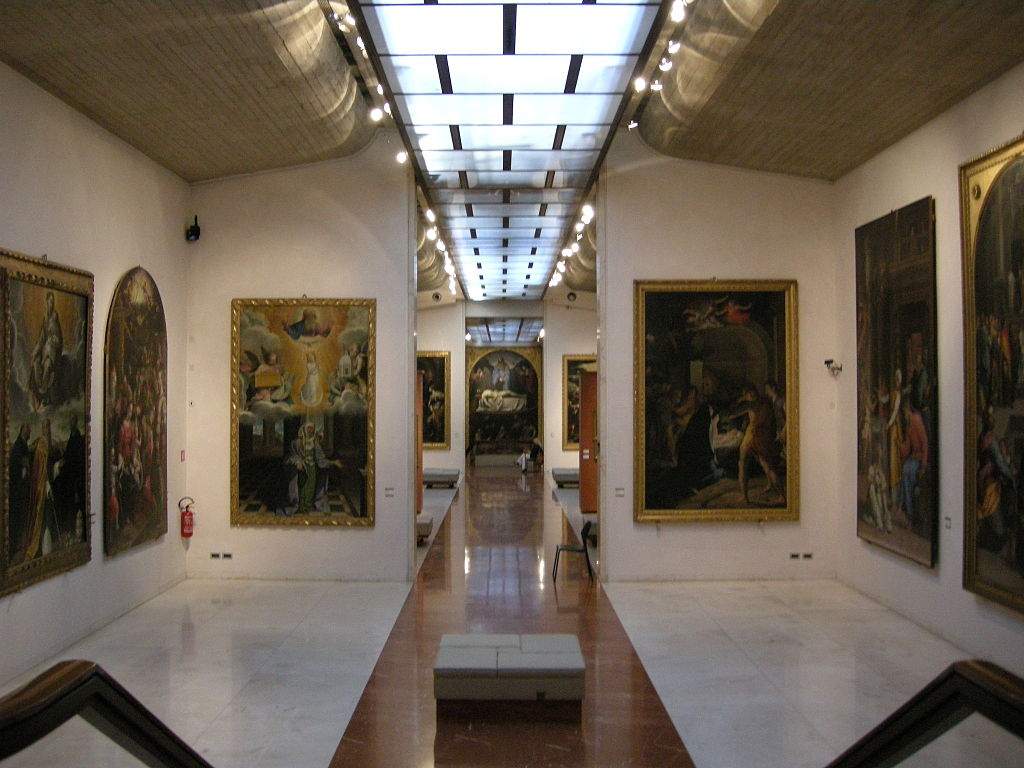Cultural Heritage Minister Dario Franceschini presented this morning at the ministry’s headquarters, the Collegio Romano, the new reorganization of MiBACT, already included in a decree approved last night by the Council of Ministers. Prominent among them are the seven new autonomous museums: they will be the Palazzo Venezia in Rome, the Pinacoteca Nazionale in Bologna, the Museo Nazionale in Matera, the Palazzo Reale in Naples, the Museo Archeologico Nazionale in Cagliari, the Museo Nazionale d’Abruzzo and the Parco Archeologico di Sibari. Autonomy is also restored for the Galleria dell’Accademia in Florence and the Appia Antica Archaeological Park.
“The new autonomous museums,” reads a MiBACT memo, “were chosen on the basis of the relevance of the places and collections, development potential, geographical distribution, historical and artistic elements, economic sustainability, and social impacts on communities. Now, as with the first museums and archaeological parks covered by the 2014 Reform, the selection of the director will be by international call for proposals: the notice will be published in early 2020 so that leading museum management experts can compete.”
Other changes include seven new Superintendencies of Archaeology and Fine Arts (Rieti, Viterbo and Southern Etruria; Cosenza; Pavia, Monza and Brianza; Imperia and Savona; Ascoli Piceno, Fermo and Macerata; L’Aquila and Teramo), plus a brand-new Superintendency of the Sea intended for the protection of underwater heritage (it will have headquarters in Taranto and branch offices in Naples and Venice), the reinstatement of the Archival Superintendencies of Umbria and Basilicata, the reinstatement of the regional secretariats (so no longer on an interregional basis as per the Bonisoli reform), the change of name of the museum poles (they will be called “regional directorates”), and the splitting of the Lazio Pole (there will be a Roman pole and a Lazio pole). Two new directorates-general are then created: Contemporary Creativity and Cultural Heritage Security (the latter will deal with emergencies, natural disasters, reconstruction of property affected by disasters).
State archives return to autonomy, and as far as libraries are concerned, the Girolamini Library in Naples is elevated to the rank of National Library. There will also be three new archival and bibliographic superintendencies. Still, among the new features is an Institute for Digitization which will be tasked with coordinating the institutes involved in cataloguing. Finally, the regional cultural heritage commissions canceled by the Bonisoli reform will be reinstated, and the export offices, which the Bonisoli reform had made autonomous from the superintendencies, will instead return internal to the superintendencies.
“Autonomy works,” Franceschini said on the sidelines, “in these years it has certainly brought more visitors, but above all it has been an excellent tool to modernize Italian museums and strengthen protection and scientific production. The data speak for themselves: the intersection between reform and the quality of directors has proven to be a winning mix for the Italian museum system.”
Pictured: the Pinacoteca Nazionale in Bologna. Ph. Credit Francesco Bini
 |
| Franceschini unveils another reorganization of MiBACT with seven new autonomous museums. Here are the main new features |
Warning: the translation into English of the original Italian article was created using automatic tools. We undertake to review all articles, but we do not guarantee the total absence of inaccuracies in the translation due to the program. You can find the original by clicking on the ITA button. If you find any mistake,please contact us.